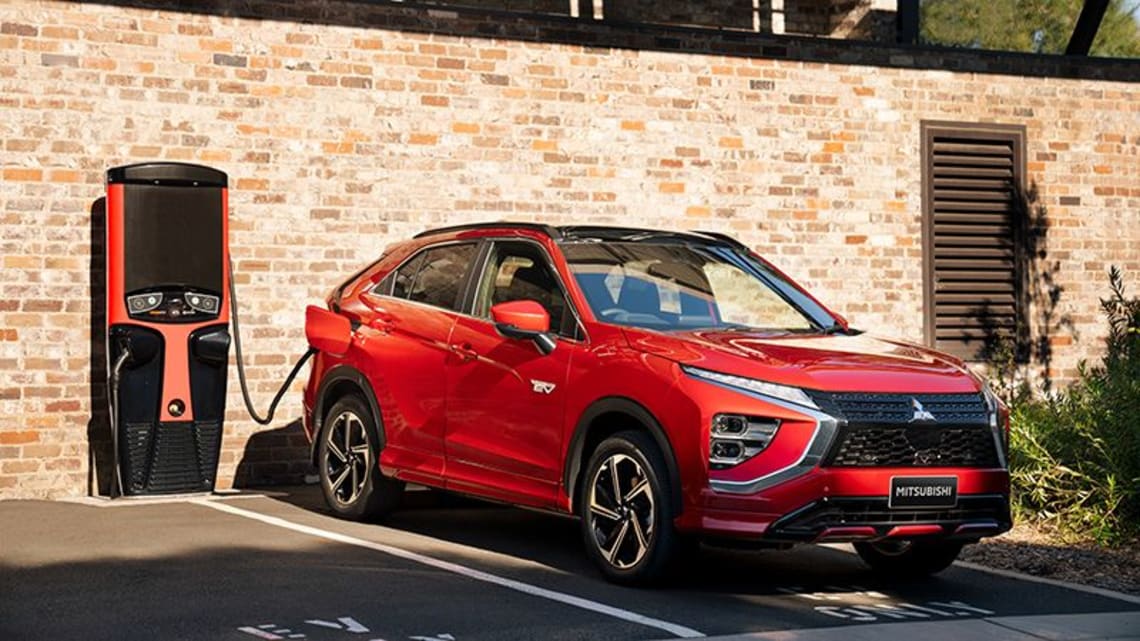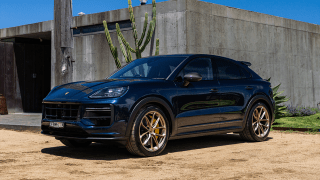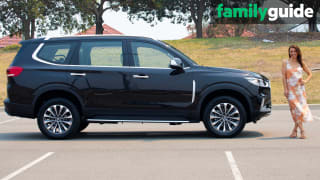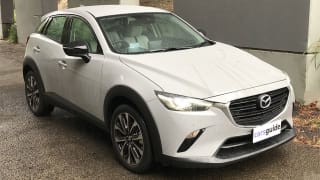There you were, just getting your head around what an EV is, and how it works, when people start talking about plug-in hybrid electric vehicles (PHEVs).
So what’s all the PH-uss about, who makes these PHEVs, and should you get one? We’ll go into more detail below, but here’s all you really need to know: a plug-in hybrid gives you the best of both worlds - plain and simple.
Or to put it another way, a plug-in hybrid allows you to live in the future (where you plug your car in at home to charge it) and the present (where you fill your car with petrol at a service station) at the same time.
Clever? You bet it is.
So, if you’re like 70 per cent of Australians, you’re probably pondering whether your next new car should be an electric vehicle. You feel like you should buy an EV for your city commuting - it’s the way of the future, it’s environmentally conscious, you’ve heard they’re fun to drive - but you’re worried, as a lot of people are, about range, and the lurking fear that an electric vehicle just won’t be able to take you on those occasional but wonderful long road trips you still want to enjoy.
Or, worse still, that it might leave you stranded somewhere, miles from the nearest charging station, or power point. This is what’s called “range anxiety”, and you’ve actually felt something like it already. You know that feeling you get towards the end of the day sometimes, when your mobile-phone battery is getting really low, and you’re worried it will go flat before you get a chance to recharge it?
That’s exactly what EV range anxiety is like, only much worse, because you can’t just ask the person next to you to borrow their car.

A Mitsubishi plug-in hybrid electric vehicle, or PHEV - like Mitsubishi’s new Eclipse Cross - allows you to have both: an efficient, clean-running city vehicle and a long-range family car. It has both an electric motor (two of them, in fact) with batteries you can charge up using a simple, familiar power plug, and an internal-combustion engine, which you can fill up using good old petrol from any of the umpteen thousand service stations around this undeniably very large country of ours.
Better still, the battery is covered by an impressive eight-year warranty, so should you need a battery replacement, you know you’re covered.
During the week you can — if you choose, and why wouldn’t you? —drive your Eclipse Cross Plug-in Hybrid in electric vehicle mode using no fuel whatsoever and, thanks to a range of up to 55km*on a single charge, only occasionally have to plug it in.
If you’ve got solar power at your house, this would also effectively reduce your weekly commuting bill to zero, and your CO2 emissions to the same.
And then, if you want to, on the weekend you can go for an 1000km round trip and use both your electric motors and your petrol engine to make that as easy as it’s always been, and significantly more fuel-efficient.
Win, and win. And even better, the PHEV’s clever technology means that when you do go on those longer drives, you’ll use the absolute minimum of fuel, while producing the absolute minimum of CO2 emissions, to do so.
How little fuel? Well, Mitsubishi’s Eclipse Cross Plug-in Hybrid boasts a staggering fuel-economy figure of just 1.9 litres per 100km**. A Toyota Camry, by comparison, offers fuel economy of 7.8 litres per 100km.
And you’ll never, ever have to worry about being stranded with an empty battery, because you can always run on petrol alone when you need to. It’s a bit like having a generator at your house - even if the power runs out, you’re always covered.
So, what is a PHEV? And how does a Mitsubishi PHEV work? Well, it’s fair to say that Mitsubishi have mastered the technology - its Outlander Plug-in Hybrid is the world’s top-selling PHEV, with more than 260,000 of them sold in Australia and 61 other global markets - so its technology bears further examination.
The new kid on the block is the Eclipse Cross Plug-in Hybrid, which is powered by a “drive trio”, which seamlessly combines a traditional but frugal 2.4-litre, four-cylinder petrol engine with a 13.8kWh lithium-ion battery pack, which runs two electric drive motors.
Jump in and start up your Mitsubishi, and everything will feel completely familiar, because you can leave everything to the Eclipse’s Cross’s sophisticated powertrain control system and it will automatically select the most efficient mode of driving, based on the prevailing conditions.
The Mitsubishi control system is “EV-based”, however, which means that it will default to EV Mode, in which it runs completely silently and the electric motors, one on each axle, do all the work.
You also have the choice of selecting EV Mode, if you want to ensure that the petrol engine won’t kick in at all. This is the kind of choice you can make with comfort and ease when, for example, your commute is only 20kms in each direction, and you know you’ve got enough range in your battery (55km* off a single charge, remember) to get you there and back. And should you run out of battery charge? That’s no problem either, as the petrol engine is waiting in the wings to take over.
There are also two other modes your Eclipse Cross can operate in (time to get your concentrating hat on here, as it’s time for a tiny bit of tech talk) - as a Series Hybrid or a Parallel Hybrid.
In Series Hybrid mode, the Eclipse Cross Plug-in Hybrid adapts itself to use both electric and petrol power in the most efficient way possible. When the charge in the battery pack gets low (or if you suddenly need additional acceleration), the petrol engine generates electricity to boost the electric power available to drive the wheels.
So the petrol engine and the batteries are working together, in series, with the internal combustion engine generating charge for the battery pack, which in-turn provides power to the electric drive motors.
In Parallel Hybrid Mode, on the other hand, power comes from the petrol engine, which drives the wheels, with the electric motors kicking in as required. Excess power from the petrol engine not used for directly driving the wheels is then fed back into the battery and stored for later use.
In this mode, the 2.4-litre petrol engine drives the front wheels while the twin electric motors run seamlessly at the same time, in parallel, which means you’ve got plenty of grunt for, say, climbing a particularly steep mountain pass.
So, there you have it. A Mitsubishi PHEV is not an EV, but it can be one when you want it to. Nor is it a petrol-powered, internal-combustion car, with their inherent higher fuel use and higher emissions, but if you need extra range, you can use it as one.
A plug-in hybrid, then, is something more than having both an EV and a petrol-powered car in one convenient package, it’s better than that. And now that you understand how it works, you’ve probably realised that a PHEV is exactly what you’re looking for in your next vehicle purchase. You just didn’t know it yet.
More information on the Mitsubishi Eclipse Cross Plug-in Hybrid.
*55km is dyno lab test result according to NEDC driving cycle and does not represent real world driving.
**1.9L/100km is dyno lab test result according to NEDC driving cycle and does not represent real world driving or fuel consumption.









Comments